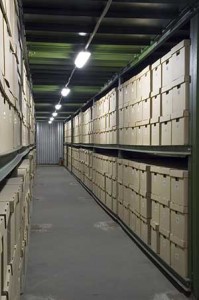
The Problem…
Archive records were being stored everywhere and nobody knew where they were or how to request them or retrieve them when needed. Records would be subpoenaed and it is crucial that this international manufacturing company be able to retrieve their records and manage the retention according to laws and government regulations. Vital contracts could not be found and duplication of work occurred across the divisions, since no one could identify common projects.
The OPUS Solution…
This company had some warehouse space and decided to provide an archive and records management service to all its divisions. A Certified Records Manager was engaged to review and submit a companywide retention schedule. The warehouse was converted into a storage facility for its inactive records.
OPUS iNet was installed with MsSQL Server database as a back end. Since no data was available electronically to import, the initial load of about 40,000 boxes were indexed and entered into OPUS by the CRM consultant’s staff. This was completed in less than one month.
The charge back feature was used to provide division charge backs for new archives, pulls and re-files as well as destruction.
Today users can electronically submit requests for archives from any of their locations worldwide. Requests are scheduled for pulls in the warehouse and are shipped out daily. Warehouse users can download pick lists from OPUS to their portable data terminal (PDT) to assure accurate picks. Returned boxes are stored at random locations and OPUS updates these locations from the PDT data.
This service has been so successful that the company has had to expand their warehouse by doubling its space. Recently some of the key divisions have decided to use OPUS for their active files, rather than waiting for them to become in-active. This has allowed them to truly manage the complete lifecycle of the records.
